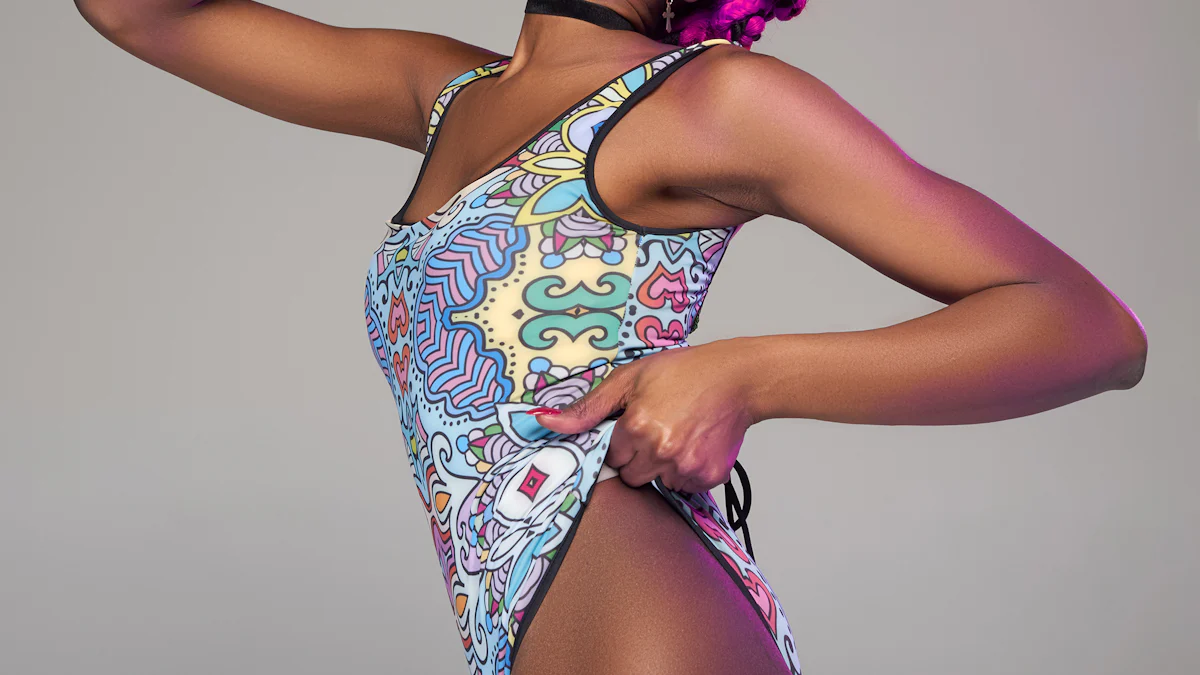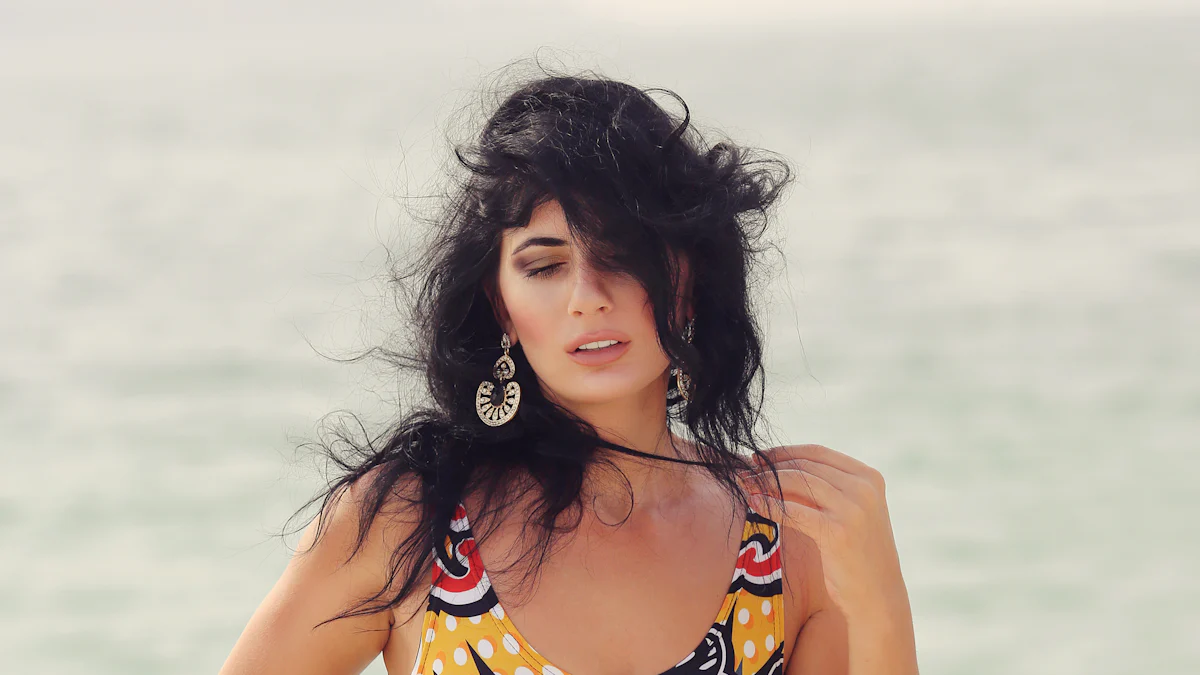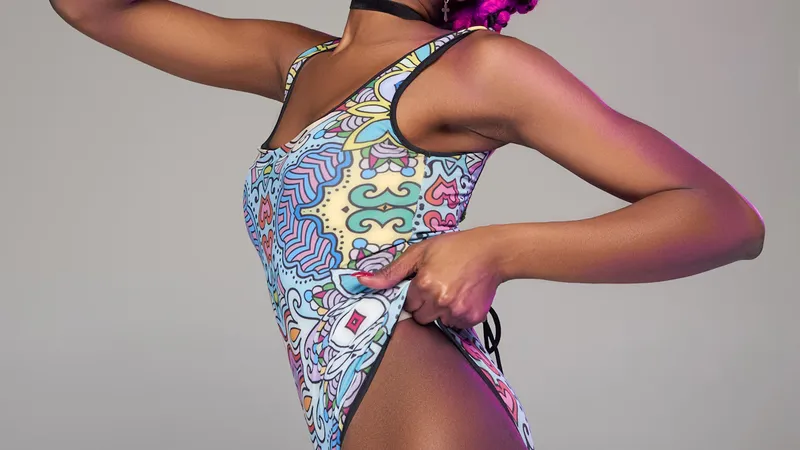
The swimwear industry is booming, and there’s never been a better time to dive in. With the global market projected to grow from $21.10 billion in 2024 to $26.13 billion by 2031, the demand for stylish, functional swimwear is skyrocketing. But here’s the catch—standing out in this competitive space requires more than just trendy designs. You need to launch a unique swimwear collection that reflects your vision and connects with your audience.
So, why not take the plunge? Whether you dream of bold prints or eco-friendly fabrics, launching a unique swimwear collection gives you the chance to make waves in the fashion world. It’s your opportunity to bring something fresh to the table and build a brand that’s truly your own.
Key Takeaways
Find your focus and audience to make swimwear people love. Study the market to spot trends and needs.
Decide what makes your brand stand out. Highlight special features like eco-friendly fabrics or creative styles.
Pick durable, planet-friendly materials to make better swimwear. Green choices attract buyers who care about the environment.
Create a strong plan with budgets and marketing ideas. A good plan keeps you on track and draws in investors.
Use new ideas and care for the planet to compete. Follow trends and listen to customers to improve your products.
Identifying Your Niche and Target Audience
Before you dive into designing your swimwear, you need to figure out who you’re creating it for. Identifying your niche and target audience is the foundation of your brand’s success. Let’s break it down step by step.
Conducting Market Research
Market research is your first step to understanding the swimwear industry. It helps you uncover trends, opportunities, and gaps in the market. Start by analyzing consumer behavior and competitor strategies. Tools like surveys, focus groups, and SWOT analysis can give you valuable insights.
Here are some key factors to consider:
Study market size, growth potential, and segmentation opportunities.
Look into emerging trends like athleisure swimwear, sustainable options, and inclusive designs.
Understand what your competitors are doing and identify areas where you can stand out.
For example, if you notice a lack of eco-friendly swimwear in your area, this could be your chance to fill that gap. Research helps you make informed decisions and sets the stage for a successful launch.
Defining Your Unique Selling Proposition
Your unique selling proposition (USP) is what makes your swimwear collection stand out. It’s the reason customers will choose your brand over others. Think about what you can offer that’s different.
Some ideas for a strong USP include:
Using sustainable materials to appeal to eco-conscious buyers.
Offering innovative designs that combine style and functionality.
Creating specialized fits for diverse body types.
Your USP should align with your brand’s values and resonate with your audience. It’s not just about being different—it’s about being meaningful.
Understanding Your Ideal Customer
To connect with your audience, you need to know who they are. Start by defining their demographics and psychographics.
Psychographic Factors | |
|---|---|
Age | Personality Type |
Gender | Lifestyles (where they holiday, activities) |
Occupation | Interests/hobbies (sports, music, etc.) |
Income | Values (highest priorities in life) |
Education | Buying behavior (online, retail, etc.) |
Marital or Family Status | Media consumption (social media, magazines) |
Where they live | |
Mode of transport |
For instance, if your ideal customer is a young professional who loves beach vacations, you might focus on stylish yet practical swimwear. Understanding your customer helps you tailor your designs, marketing, and messaging to meet their needs.
By identifying your niche and target audience, you’re setting the stage to launch a unique swimwear collection that truly stands out.
Designing and Developing Your Swimwear Collection

Finding Design Inspiration
Designing swimwear is all about creativity and connection. Start by exploring what inspires you. Do you love bold, tropical prints? Or maybe you’re drawn to sleek, minimalist styles? Inspiration can come from anywhere—nature, art, or even your own travels. Keep a mood board to collect ideas and refine your vision.
The latest swimwear trends can also spark ideas. Vibrant, exclusive prints are making waves for 2025 collections. High-performance fabrics with features like sun protection and moisture-wicking are gaining popularity. Some brands even use smart textiles for UV monitoring. These innovations can help you create a collection that feels fresh and exciting.
Selecting Fabrics and Materials
Choosing the right materials is crucial for both style and functionality. Look for fabrics that are durable, comfortable, and eco-friendly. Sustainable options like Econyl, made from recycled fishing nets, or Repreve, crafted from plastic bottles, are excellent choices. These materials not only reduce waste but also offer resistance to chlorine and UV rays.
If you want to stand out, consider bio-based fabrics like algae-derived textiles or organic cotton for casual swimwear. These options appeal to eco-conscious customers and align with the growing demand for sustainability. Remember, the fabric you choose will define the quality and feel of your swimwear.
Balancing Trends and Originality
Staying trendy doesn’t mean losing your unique touch. You can incorporate popular elements while keeping your brand identity intact. For example, sustainable materials and versatile styles are in demand. Many customers love swimwear that doubles as casual wear. Bold prints and patterns also grab attention in a crowded market.
Put your own spin on these trends. If bold prints are popular, create exclusive designs that reflect your brand’s personality. Staying aware of consumer habits, like the preference for customization, can also set you apart. By blending trends with originality, you’ll create a collection that feels both relevant and authentic.
Building a Business Plan for Your Swimwear Collection
A solid business plan is your roadmap to success. It helps you stay organized, attract investors, and turn your vision into reality. Let’s break it down step by step.
Financial Planning and Budgeting
Launching a swimwear collection involves several costs, so careful budgeting is essential. Start by listing all potential expenses. Here’s a breakdown of typical costs:
Expense Category | Estimated Cost Range |
|---|---|
Initial Inventory Purchase | |
Branding and Marketing Costs | $2,000 - $5,000 |
Website Development | $3,000 - $10,000 |
Licenses and Permits | $500 - $1,500 |
Insurance Coverage | $1,000 - $2,500 |
If you’re working with a tight budget, consider starting small. For example, you could launch online-only or focus on a limited collection of high-demand styles. Free marketing tools like social media can also help you save money while building your brand.
Marketing and Branding Strategies
Your marketing strategy is how you’ll connect with your audience. Social media platforms like Instagram and TikTok are perfect for showcasing your swimwear. Post high-quality photos, use trending hashtags, and engage with your followers. Collaborating with influencers can also help you reach a wider audience.
Don’t forget email marketing! Sending personalized emails about new arrivals or exclusive discounts can keep your customers engaged. Track your campaigns using analytics tools to see what works and refine your approach. A strong marketing plan will make your brand memorable and drive sales.
Planning for Growth and Scalability
As your business grows, you’ll need to scale up. Start by ensuring your suppliers can handle increased demand. Working with multiple vendors can help you avoid delays.
Think about expanding your product line. Swim accessories like beach bags or cover-ups can complement your collection. Seasonal collections for holidays or summer can also attract repeat customers.
Explore new distribution channels to reach more people. Selling on platforms like Amazon or partnering with local boutiques can broaden your audience. By planning for growth, you’ll set your swimwear brand up for long-term success.
Building a business plan might seem overwhelming, but it’s a crucial step to launch a unique swimwear collection. With clear goals and smart strategies, you’ll be ready to make waves in the industry.
Manufacturing and Production Process
Sourcing Reliable Suppliers
Finding the right supplier is key to turning your designs into high-quality swimwear. You want a partner who understands your vision and delivers consistent results. Here’s how you can source reliable suppliers:
Conduct thorough research. Look for manufacturers with strong portfolios and positive reviews.
Request samples. Evaluate the quality of their previous work before committing.
Discuss production processes. Understand their capabilities and timelines to ensure they align with your needs.
Prioritize quality control. Choose suppliers with strict inspection measures at every production stage.
Focus on sustainability. Partner with manufacturers who use eco-friendly materials and ethical practices.
Establish clear communication. Address concerns early to avoid production delays.
Start by defining your brand’s requirements. Share your goals and product specifications with potential suppliers. Building a long-term relationship with a reliable manufacturer can improve efficiency and quality over time.
Ensuring Ethical and Sustainable Practices
Consumers today care about how their products are made. You can stand out by ensuring your swimwear production is both ethical and sustainable. Look for certifications that reflect these values, such as:
Global Organic Textile Standard (GOTS)
OEKO-TEX
Bluesign
Using sustainable materials like Econyl® regenerated nylon or recycled polyester can reduce environmental impact. These alternatives minimize pollution and greenhouse gas emissions compared to traditional fabrics. By choosing ethical suppliers and sustainable materials, you’ll not only protect the planet but also attract eco-conscious customers.
Maintaining Quality Control Standards
Quality control ensures your swimwear meets customer expectations. Start by implementing checks throughout the production process. Regular inspections and material testing can help you catch issues early.
Here are some essential quality control measures:
Conduct regular audits to identify and fix defects.
Use standardized procedures to maintain consistency across all products.
Test fabrics for durability, stretch, and resistance to chlorine or UV rays.
Final product checks are just as important. Inspect each piece for stitching, fit, and overall quality before it reaches your customers. High standards build trust and keep your audience coming back for more.
By focusing on reliable suppliers, ethical practices, and quality control, you’ll create a swimwear collection that stands out for all the right reasons.
Launching and Marketing Your Swimwear Brand

Establishing an Online Presence
Your online presence is the backbone of your swimwear brand. Start by investing in your website. Think of it as your virtual storefront—it needs to look great and work smoothly. Regular updates and maintenance keep it appealing and functional, which helps attract and retain customers.
Content is king when it comes to marketing. High-quality photos, videos, and blog posts can grab attention and tell your brand’s story. A blog with style guides or tips on coordinating swimwear outfits can make your site more engaging. Plus, it boosts your SEO, helping more people find you online.
Don’t underestimate the power of video marketing. Short clips showcasing your swimwear in action—on the beach or by the pool—can captivate your audience. Share these videos on social media and in email campaigns to drive engagement and sales.
Collaborating with Influencers and Partners
Influencers can help you reach a wider audience. Look for creators who align with your brand values and have followers who match your target market. Micro-influencers, with smaller but highly engaged audiences, can be especially effective.
Partnerships with complementary brands can also expand your reach. For example, teaming up with a sunscreen or beach accessory brand can create cross-promotional opportunities. These collaborations introduce your swimwear to new customers while strengthening your brand’s credibility.
Crafting a Compelling Brand Story
Your brand story is what makes you memorable. A great story connects with your audience on an emotional level. Start with a clear plot that ties your journey to your swimwear collection. Highlight challenges you’ve overcome and how your designs solve customer pain points.
Authenticity is key. Share your values and what drives your passion for swimwear. For instance, if sustainability is your focus, explain how your materials and processes reflect that commitment. Adding data, like how much waste your eco-friendly fabrics save, can make your story even more persuasive.
A relatable story builds trust and loyalty. When customers see themselves in your brand, they’re more likely to stick around. Use your story to inspire and invite them to be part of your journey as you launch a unique swimwear collection.
Staying Competitive in the Swimwear Market
Embracing Sustainability and Innovation
To stay ahead in the swimwear market, you need to embrace sustainability and innovation. Customers today care about how their products are made and the impact they have on the planet. By focusing on eco-friendly practices and cutting-edge designs, you can set your brand apart.
Take inspiration from brands like You Swim, which uses premium Nylon yarn sourced from the EU to create one-size-fits-all swimwear. This approach reduces transportation emissions and adapts to different body shapes. Another example is Fisch, a brand that uses ECONYL®, a fabric made from regenerated ocean waste like fishing nets. Their commitment to ethical production and a carbon-neutral supply chain resonates with eco-conscious buyers.
Innovation doesn’t stop at materials. Advances in fabric technology, like moisture-wicking and UV protection, can elevate your designs. These features not only meet consumer preferences but also add value to your products. By combining sustainability with innovation, you’ll create swimwear that’s both stylish and responsible.
Adapting to Market Trends
The swimwear market evolves quickly, and staying relevant means adapting to trends. Start by conducting regular market research. This helps you understand consumer behavior and identify gaps in the market. For example, if you notice a growing demand for versatile swimwear that doubles as casual wear, you can tailor your designs to meet that need.
Here are some strategies to stay on top of trends:
Use digital marketing tools like email campaigns and social media to connect with your audience.
Collaborate with influencers to expand your reach and build credibility.
Launch user-generated content campaigns to boost engagement and authenticity.
Brands that adapt quickly to changing preferences often succeed. Whether it’s through automated email sequences for abandoned carts or personalized promotions, staying flexible keeps your brand competitive.
Leveraging Customer Feedback for Improvement
Your customers are your best resource for improvement. Actively seek their feedback to refine your products and services. Post-purchase surveys, social media interactions, and reviews can provide valuable insights into what’s working and what needs adjustment.
Here’s how you can use feedback effectively:
Encourage reviews and ratings to build trust and attract new buyers.
Use surveys to gather input on fit, style, and overall satisfaction.
Showcase user-generated content to reduce return rates and enhance brand loyalty.
When you implement changes based on customer suggestions, you show them that their opinions matter. This builds stronger relationships and keeps them coming back. By listening to your audience, you’ll not only improve your swimwear but also create a brand they love.
Staying competitive requires a mix of sustainability, adaptability, and customer focus. When you prioritize these elements, your swimwear brand will thrive in a crowded market.
Launching a unique swimwear collection might seem like a big leap, but breaking it into steps makes it manageable. Start by defining your niche and USP to stand out. Dive into market research to understand your audience and competitors. Build a solid business plan, and don’t forget to focus on sustainability and quality.
Remember, swimwear is personal. As one designer shared, “There would be no one swimsuit to make everyone happy.” Use this as motivation to create designs that reflect your vision. Involve your audience through polls or surveys and let their input guide you.
This is your chance to bring something fresh to the market. Embrace originality, stay adaptable, and take that first step. Your swimwear brand could be the next big thing!
FAQ
What’s the best way to start designing my swimwear collection?
Start with a mood board! Gather inspiration from nature, art, or travel. Think about your brand’s personality and what makes it unique. Keep an eye on trends, but don’t forget to add your personal touch. Your designs should reflect your vision and connect with your audience.
How can I make my swimwear brand eco-friendly?
Use sustainable materials like Econyl or Repreve, which are made from recycled waste. Partner with ethical manufacturers who follow eco-friendly practices. Highlight your commitment to sustainability in your branding. Customers love knowing their purchases help the planet!
Do I need a large budget to launch my swimwear brand?
Not necessarily! Start small with a limited collection or an online-only store. Use free marketing tools like social media to promote your brand. Focus on quality over quantity. A clear plan and smart budgeting can help you launch successfully without overspending.
How do I find the right manufacturer for my swimwear?
Research manufacturers with experience in swimwear production. Request samples to check quality. Look for partners who align with your values, especially if sustainability is important to you. Clear communication is key—share your expectations upfront to avoid surprises later.
How can I stand out in the competitive swimwear market?
Focus on your unique selling proposition (USP). Whether it’s bold designs, inclusive sizing, or sustainable materials, make sure your brand offers something special. Engage with your audience through social media, collaborations, and storytelling. Authenticity and creativity will set you apart.
